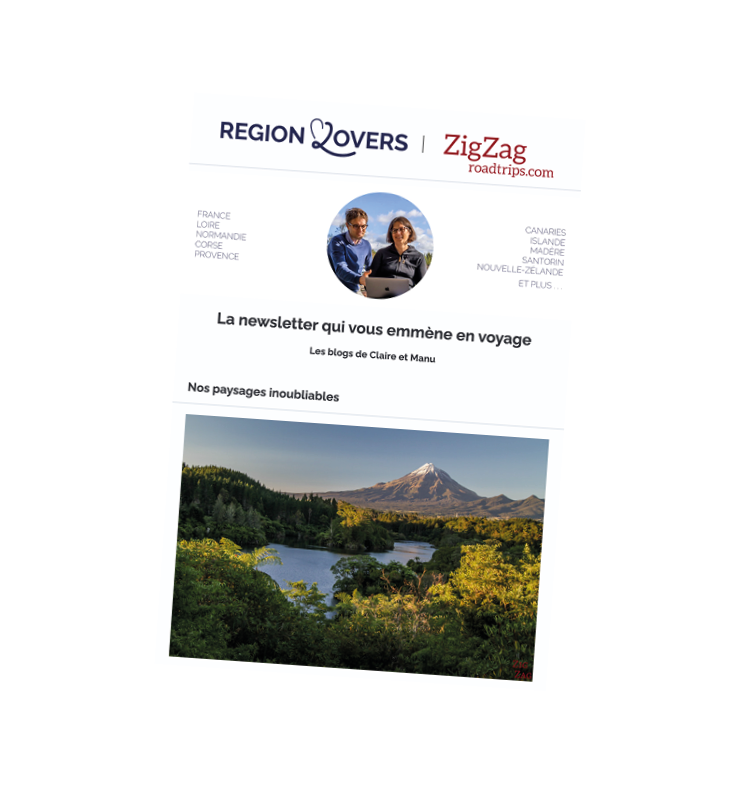Located in one of Honfleur’s most picturesque little streets, the Eugène Boudin Museum is well worth a visit.
The changing lights of the Seine estuary, the particular colors of the sea, the beauty of the Normandy countryside, the maritime and intimate atmosphere of the city… Everything was gathered to make Honfleur a place of inspiration for the impressionist painters.
In this article, we bring you our practical advice for a successful visit to the museum before talking about the close ties between the artists and the city of Honfleur.
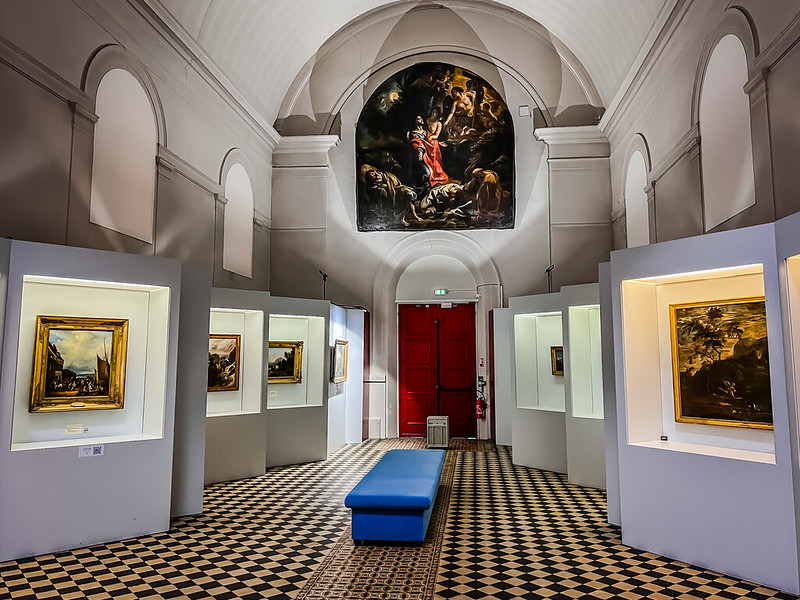
This review is completely independent, we visited the museum anonymously and paid our entrance fees in full.
Why visit the Eugène-Boudin Museum?
Is the Eugène-Boudin Museum worth it? Our opinion:
We loved our visit to the Eugene Boudin Museum and it is definitely worth a visit during your stay in Honfleur. We have also included it in our list of 21 things to do in Honfleur:
- For the richness of its collections, mainly devoted to impressionist painters and Norman landscapes. When you leave the museum, your view of Honfleur and the sea will have been enriched by the palette of painters exhibited in the museum.
- For the beauty of the architecture of some of the rooms in the building, which were housed in the former chapel of the Augustinian convent.

- For the experience, to be able to contemplate in the same glance, the works and the landscapes which inspired them. This is notably the case with the bay window of the Katia Granoff room which offers a large view on the Seine estuary.
Why is the Eugène-Boudin Museum famous?
Although the museum was created in 1868 by another Honfleur artist, Louis-Alexandre Dubourg, it owes its fame to the notoriety and generous bequest of the Honfleur-born painter Eugène Boudin in 1899.

A prolific painter (4482 paintings recorded and 6000 drawings and other pastels), he is an important painter of the pre-impressionists and one of the pioneers of the impressionist movement to which he adheres from 1874. He was one of the masters of Claude Monet who said of him “If I became a painter, it is to Boudin that I owe it”. The famous painter, will crown Eugene Boudin with the title of“king of the skies“. A beautiful tribute!

The Eugène Boudin Museum presents 112 works by the artist, who is also exhibited in the greatest museums in the world (Orsay in Paris, Moma in New York, Tate Gallery in London…).
Eugène Boudin’s influence on Honfleur will go beyond his work. It is indeed at his invitation that the future great names of Impressionism gathered around him at theinn of the Saint Simeon farm on the heights of Honfleur. We talk about it in detail a little further down in the article.
Far from limiting itself to this artist, the museum presents a beautiful panorama of pre-impressionist and impressionist painters of the second half of the 19th century. You will also discover more unexpected objects, such as old toys, or ethnographic objects from Norman traditions.
Subscribe to our Newsletter
- Get away from it all with Region Lovers’ beautiful destinations!
- Once a month
- Advertising-free
History in brief
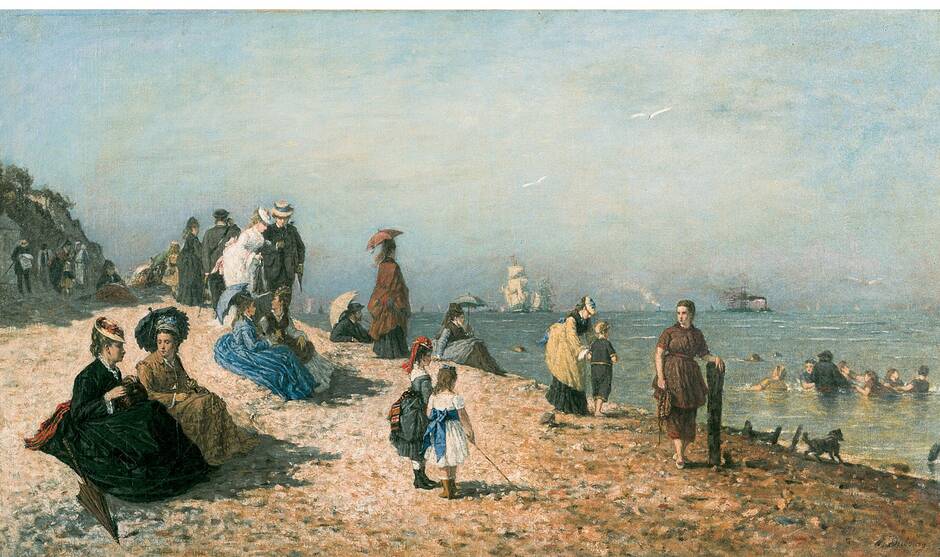
- On April 11, 1868, the Honfleur Municipal Museum was created on the initiative of Louis-Alexandre Dubourg, a painter from Honfleur, who became its first curator. To carry out his project, he benefited from the support of Eugène Boudin and the impressionist painters who frequented the Saint-Siméon farm in the hills above Honfleur.
- In 1869, the museum opened its doors in the attic of the town hall and exhibited 61 pieces.
- In 1924, the museum was moved to its present location in the chapel of the Augustinian convent.
- In 1974, the museum expanded with a new building and 3 additional exhibition rooms.
- In 1988, a new building was erected on four levels to accommodate the ever-growing collections.
- In 2022, the museum exhibits and preserves more than 2500 works, 1000 objects…
Practical advice and map Eugène-Boudin Museum,France
Where is the Eugène-Boudin Museum
- Driving time from Rouen: 1h05
- Driving time from Evreux: 1h20
- Driving time from Caen: 55min
- Driving time from Alençon: 1h45
- Driving time from Cherbourg: 2h10
How to get there
The city of Honfleur has been for a long time rather poorly served, even if this has improved (a little) with the construction of the beautiful Pont de Normandie in 1988.

We clearly advise you to opt for the car by renting your car if necessary from Paris.
If you are more adventurous, you can take a train from Paris Saint Lazare either to Le Havre or to Deauville and finish by bus (minimum 3h30 of travel)…
And for having practiced it a lot, we are not sure that the train journeys between Paris and Normandy are much shorter than those told by Marcel Proust at the beginning of the 20th century. A true praise of slowness, or the opportunity to reread the complete ” In Search of Lost Time ” during the trip (7 volumes). It’s up to you!
Parking
When you think of poor transport links, the seaside and a tourist town, you think of parking problems! Even though the number of parking lots has increased tenfold in the last few years, they can fill up quite quickly in summer. The most convenient way to get to the Eugène Boudin Museum is to park near the public garden on Boulevard Charles V.

The city is not very large, so don’t hesitate to jump on the first place you see!
All parking lots in the center are subject to a fee.
OUR ADVICE FOR RENTING A CAR IN Normandy
- Compare prices on our preferred platform: DiscoverCars – one of the best rated sites.
- Choose a car that is comfortable enough (distances can be long) but compact (some parking lots and villages are narrow).
- Think of thecomplete insurance (some roads are tortuous and narrow).
- There is a lot of demand, book it early.
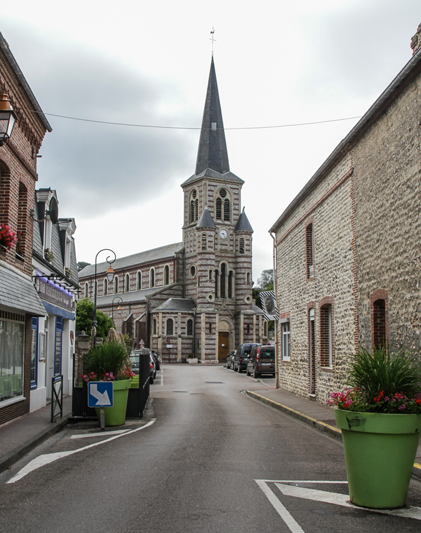
Best time to visit the Eugène-Boudin Museum
The museum’s attendance is directly related to that of the city, which tends to increase from year to year.
However, as far as we could see, it is still measured, far from the big Parisian museums. You should be able to fully enjoy the works.

How long to visit the museum and main difficulties
Two floors of the museum are currently open to the public and the number of works on display is relatively large. We advise you to plan at least 1 to 1.5 hours to visit the 7 rooms.
To go up to the floors, you can either opt for the steps or prefer an elevator, which makes it a very accessible museum without any particular difficulty.
Advice on how to visit
The visit of the museum is from the bottom to the top:
- Désiré Louveau room (1st floor): this room presents the collection of the Honfleur ethnographer, Désiré Louveau, dedicated to the traditions of Normandy (headdress, costume, lace). Unfortunately, we were not able to visit it because it was being renovated during our stay.
- The Chapel (2nd floor): in a grandiose architecture, this former chapel of the Augustinian convent of neoclassical style, hosts some temporary exhibitions of the Museum.

- Alexandre Dubourg room (2nd floor) dedicated to the painters of the 19th century (Gustave Courbet, Camille Corot, Claude Monet…).

- Cabinet Eugène Boudin (2nd floor), in the continuation of the Dubourg room, 2 spaces are dedicated to pastels and oils painted by Eugène Boudin. We can imagine (and envy) the creative bubbling that must have reigned in Honfleur when all these artists met at the Saint Simeon farm inn….

Character at the edge of a wood – Eugène Boudin – circa 1880
- Jean Dries room (2nd floor): we discover painters of the XXth century who spent part of their lives in Honfleur. The exhibition of the moment was dedicated to the winners of the Julian Academy painting prize, hosted in residence in the old lighthouse of the city from 1949 to 1957.

- Katia Granoff room (3rd floor): again painters of the XXth century with works of the brilliant colorist Raoul Dufy (born in Le Havre) or the pioneer of the modern movement, Amédée Ozenfant. This room has a large bay window giving a 180 degree view of the Pont de Normandie and the bay of the Seine.

- Hambourg-Rachet room (3rd floor): born from the donation of the widow of the painter André Hambourg, this room presents works of the latter, but also of other painters linked to Honfleur, such as Adolphe-Félix Cals or Henri De Saint-Delis.

- Finally, a cabinet of drawings (3rd floor), will allow you to discover works often less known than the paintings, but just as fascinating.

Finally, outside the walls, you can finish your discovery of the collection of the Eugène Boudin museum, by the religious works exposed in the deported bell tower of theSainte Catherine church.
USE OUR GUIDE TO PLAN A
DREAM TRIP TO Normandy
All the information you need for your trip:
- 8 maps that make planning easier
- 160+ pre-selected locations
- Practical advice
- 300+ photos to help you choose
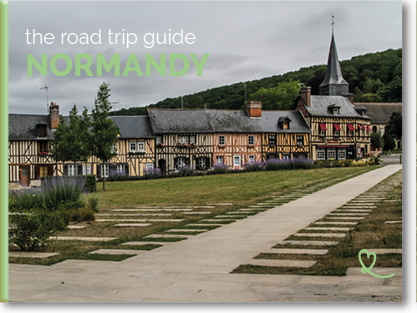
Schedules and prices
Schedules:
- Open all year round
- Open every day except Tuesday
- From 10am to 12pm and from 2:30pm to 5:30pm minimum
Rates:
Full adult rate: from 6,5€.
Children’s rate: free under 16 years old
Guided tours
No guided tour, but a very complete audioguide with about sixty comments.
WHERE TO STAY IN Honfleur
Option 1:
Choose a historic house near the old port.
- Hotel Absinthe – see prices, photos and availability

Option 2:
Choose a hotel higher up for more peace and quiet while remaining close.
- Hotel La Maison de Lucie – see prices, pictures and availability

Option 3:
A bit of luxury in the surrounding countryside.
- the magnificent Saint-Siméon Farm – see prices, photos and availability
Honfleur, the city of painters
Carried by the cultural abundance of the 19th century and the advent of seaside towns, a whole generation of painters discovered the Normandy coast, its lights and colors…
Honfleur and William Turner
The English painter William Turner was one of the first to take Honfleur as a setting, he painted there in 1832, the painting “The Lieuntenancy Building” exhibited at the Tate Gallery in London or the canvas “Honfleur” property of the British Museum.

Nicknamed “the painter of light”, he prefigured the impressionist movement 40 years before its advent.
Honfleur and the Saint-Siméon farm, one of the cradles of impressionism
From 1850 to 1870, Eugène Boudin stayed regularly in his native town of Honfleur, at theinn of the Saint Simon farm, run by the “mother Toutain“. He brought his artist friends, including Claude Monet, the Dutch painter Johann Barthold Jongkind and Gustave Courbet.
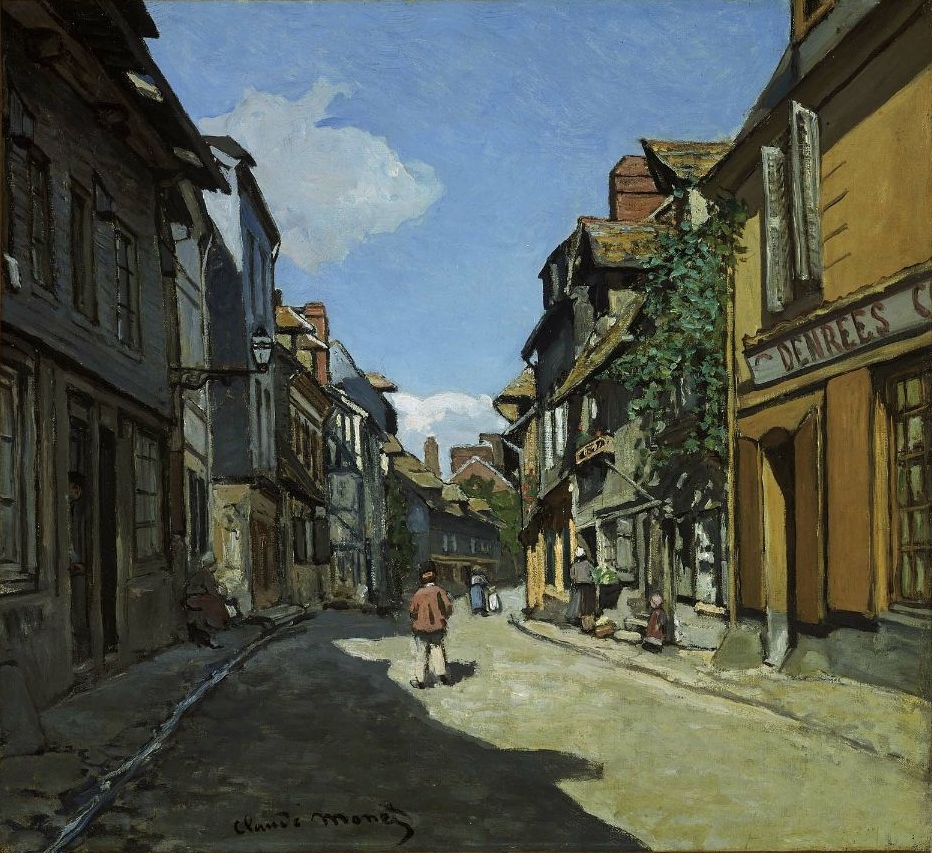
Very far from the current luxury hotel, the inn is more like a table d’hôte than a gourmet restaurant. But the meeting of all these talents will contribute to make the pre-impressionist movement live and impressionism bloom.

Far from being limited to painting, the city also attracted writers, such as Charles Beaudelaire, whose father-in-law owned a house on the Grace Coast. He rubs shoulders with Eugène Boudin and finds inspiration there, as he testifies in this letter to the literary critic Sainte Beuve in 1859 “New flowers made and fairly regular. Here, in the rest, the faconde returned to me”.
An extension of the city’s artistic vocation.
This cultural attraction will continue in the following decades with artists such asAdolphe Marais, a realist painter, or Emile Renouf, a famous portraitist of the second half of the 19th century.

At the beginning of the XXth century, the city welcomed the greatest landscape artists from Raoul Dufy to Fernard Herbo and Felix Valloton. They rub shoulders with the brilliant music composer Erik Satie and the author and humorist Alphonse Allais, born in Honfleur just a few blocks away!
More recently, from 1949 to 1957, all the winners of theJulian Academy painting prize came to live in the former lighthouse of the Honfleur Hospital. This prestigious Parisian art school, founded in 1866, allows the new generation of painters (René Décrion, Lee Owens, Alain Paul Gerbaud….) to discover these landscapes that have so inspired their prestigious elders.
PLAN YOUR TRIP TO Normandy
Inspiration destinations
- Deciding where to go in Normandy – the best destinations
- Our weekend ideas: best-of, romantic, unusual, seaside, luxury, family
- 16 seaside hotels in Normandy
- The most beautiful charming hotels in Normandy

Best of

Practice
- Where to stay in Normandy – best places and hotels
- See our tips for renting a car at CDG airport, Orly airport, Beauvais airport, Caen, Rouen, Bayeux…

Our top 3 things to do in Honfleur
Walk around the old basin

Became the most most typical of Honfleur, the old basin was used for a long time by fishermen and sailors who armed their boats in the shelter, before facing the dreaded Sleeve! Lined with tall Norman houses, some of whose facades are covered with slate, the old basin has inspired a whole generation of impressionist paintersinspired by the reflections of the water and the 50 shades of sky so characteristic of the mouth of the Seine. Let yourself be charmed!
Discover the church of Sainte Catherine

This church in the heart of Honfleur is a rare piece of religious heritage in France. Entirely built in wood, its vault has the shape of an overturned boat hull (15th century). Its oak belfry was moved to an annex building for fear of lightning igniting the frame, but also because it could not withstand the weight of the 6 bells sheltered for a time in the belfry. We particularly like the atmosphere of this church which recalls the maritime vocation of Honfleur with its numerous ex-voto plaques dedicated to fishermen and the sea.
Read our article.
Visit the Eugène Boudin Museum

Born in Honfleur in 1824, Eugène Boudin is an emblematic painter of the impressionist movement who was greatly inspired by the landscapes of Normandy and Brittany. He has become famous for his marine works, knowing how to render, like no other, theharbor atmosphere that we love so much. The Eugène Boudin Museum in Honfleur, located in the former chapel of the Augustine convent, houses a rich collection dedicated to the famous painter and the Impressionists, but also to lesser known aspects of Norman popular art (wooden games, posters…).
Read our article.
And to learn more:

